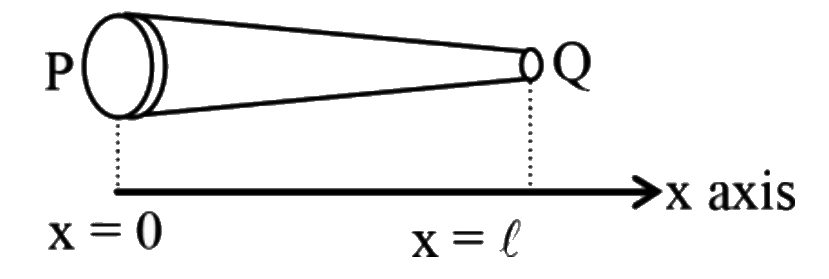A potential difference of 100 V is applied to the ends of a copper wire one metre long.
What is the magnitude of electric field produced ?
100Vm−1
20Vm−1
10Vm−1
25Vm−1
The correct Answer is:a
To solve the problem of finding the magnitude of the electric field produced when a potential difference of 100 V is applied across a copper wire of length 1 meter, we can follow these steps:
1. Identify the given values:
- Potential difference (V) = 100 V
- Length of the wire (L) = 1 m
2. Recall the formula for electric field (E):
The electric field (E) produced in a conductor can be calculated using the formula:
E=VL
where:
- E is the electric field in volts per meter (V/m),
- V is the potential difference in volts (V),
- L is the length of the conductor in meters (m).
3. Substitute the values into the formula:
E=100V1m=100V/m
4. Conclusion:
The magnitude of the electric field produced is:
E=100V/m
Final Answer:
The magnitude of the electric field produced is 100 V/m.
---
- Potential difference (V) = 100 V
- Length of the wire (L) = 1 m
The electric field (E) produced in a conductor can be calculated using the formula:
E=VL
where:
- E is the electric field in volts per meter (V/m),
- V is the potential difference in volts (V),
- L is the length of the conductor in meters (m).
E=100V1m=100V/m
The magnitude of the electric field produced is:
E=100V/m
The magnitude of the electric field produced is 100 V/m.
Similar Questions
A potential difference V is applied to copper wire of diameter d and length L, what will be the effect on, the electron drift speed by doubling (a) voltage V, (b) length L, and (c ) diameter d?
View SolutionWhen a potential difference of 2 volt is applied across the ends of a wire of 5 m length, a current of 1 A flows through it. Calculate :
the resistance across the ends of the wire if it is doubled on itself.
View SolutionWhen a potential difference of 2 volt is applied across the ends of a wire of 5 m length, a current of 1 A flows through it. Calculate :
the resistance of 2 m length of the wire,
View SolutionWhen a potential difference of 2 volt is applied across the ends of a wire of 5 m length, a current of 1 A flows through it. Calculate :
the resistance per unit length of the wire,
View SolutionA copper wire has a resistance of 10Ω and an area of cross-section 1mm2. A potential difference of 10 V exists across the wire. Calculate the drift speed of electrons if the number of electrons per cubic metre in copper is 8×1028 electrons.
View SolutionA wire of length l tapers uniformly from end P to end Q with the diameter at P twice that at Q. A potential difference is applied across the ends of the wire. Which graph represents the variation of the drift velocity V of the conduction electrons with distance x?

View SolutionThe length of a potentiometer wire is 10m and a potential difference of 2 volt is applied to its ends. If the length of its wire is increased by 1m, the value of potential gradient in volt/m will be (potential difference across potentiometer wire remain same)
View SolutionA potential difference of 30V is applied between the ends of a conductor of length 100 m and resistance 0.5Ω . The conductor has a uniform cross-section. Find the total linear momentum of free electrons.
View SolutionWhen a potential difference of 3 V is applied between the two ends of a 60 cm long metallic wire, current density in it is found 10 be 1×10−7Am−2 Find conductivity of the material of the wire in SI system.
View SolutionThe plates of a parallel-plate capacitor in vacuum are 5.00mm apart and 2.00m2 in area. A potential difference of 10,000V is applied across the capacitor. Compute
(a) the capacitance
(b) the charge on each plate, and
(c) the magnitude of the electric field in the space between them.
View Solution
